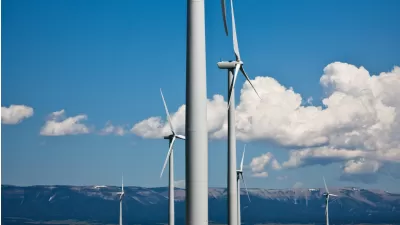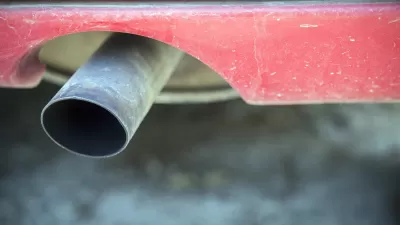As the nation's third largest oil producer, California has a long history with the oil industry, yet it's also the birthplace of the American environmental movement. Lisa Margonelli makes the case for the Golden State reducing its oil addiction.
"The history and idea of California are so tied up with oil—from the oil fields of Bakersfield and Signal Hill to millionaires like J. Paul Getty and Armand Hammer to the state’s famous car-and-freeway culture—that it is hard to imagine the state without oil," writes Lisa Margonelli, an energy policy expert, author, and former Atlantic writer. "But that is exactly what many Californians are imagining."
The comprehensive piece on Zócalo Public Square is focused somewhat on Santa Barbara, beginning with the May oil pipeline spill and the devastating 1969 offshore oil spill.
After the Exxon Valdez oil spill in 1989, national environmental groups focused their energy on reducing oil drilling in the U.S. while oil consumption and imports grew. But Santa Barbara’s independent environmental groups remained committed to “Getting Oil Out”—entirely, not just reducing oil drilling.
Interestingly, not much has changed, as noted by the recent federal legislation, "Keep it in the Ground Act." And some might question whether Santa Barbara's opposition is confined to oil or to anything harming the coast—which includes what some consider the modern day equivalent to oil derricks, offshore wind farms.
Fast forward to the passage of landmark renewable energy and energy efficiency legislation that initially included reducing oil consumption by 50 percent in 15 years. "SB 350’s radical prescription on oil use was defeated politically, without a vote, in part by the Western States Petroleum Association (WSPA)" which ran a successful campaign to convince so-called "moderate Democrats" to drop the oil reduction provision under the guise it would increase oil prices.
But outside of Sacramento, Californians just aren’t that into oil anymore: Between 2008 and 2014, the country’s highest gas prices led drivers to decrease their gas consumption by a billion gallons a year.
The trend has not continued, sadly. Even a year before gas prices plummeted in July, 2014, gas consumption began to increase.
Perhaps California's dual role as a major oil producer and environmental leader is best illustrated with none other than the driving force behind California's climate legislation, Gov. Jerry Brown. While striving to reduce oil consumption, as noted in his January inaugural speech, it was revealed by the San Francisco Chronicle on Nov. 12 that "last year (he) asked the head of California’s oil regulating agency to study the history of oil and natural gas drilling near his family’s land in Colusa County."
Hat tip: Fred Huette, Sierra Club International Climate and Energy Committee
FULL STORY: Imagining California Without Oil Refineries

Alabama: Trump Terminates Settlements for Black Communities Harmed By Raw Sewage
Trump deemed the landmark civil rights agreement “illegal DEI and environmental justice policy.”

Study: Maui’s Plan to Convert Vacation Rentals to Long-Term Housing Could Cause Nearly $1 Billion Economic Loss
The plan would reduce visitor accommodation by 25% resulting in 1,900 jobs lost.

Why Should We Subsidize Public Transportation?
Many public transit agencies face financial stress due to rising costs, declining fare revenue, and declining subsidies. Transit advocates must provide a strong business case for increasing public transit funding.

Paris Bike Boom Leads to Steep Drop in Air Pollution
The French city’s air quality has improved dramatically in the past 20 years, coinciding with a growth in cycling.

Why Housing Costs More to Build in California Than in Texas
Hard costs like labor and materials combined with ‘soft’ costs such as permitting make building in the San Francisco Bay Area almost three times as costly as in Texas cities.

San Diego County Sees a Rise in Urban Coyotes
San Diego County experiences a rise in urban coyotes, as sightings become prevalent throughout its urban neighbourhoods and surrounding areas.
Urban Design for Planners 1: Software Tools
This six-course series explores essential urban design concepts using open source software and equips planners with the tools they need to participate fully in the urban design process.
Planning for Universal Design
Learn the tools for implementing Universal Design in planning regulations.
Smith Gee Studio
Alamo Area Metropolitan Planning Organization
City of Santa Clarita
Institute for Housing and Urban Development Studies (IHS)
City of Grandview
Harvard GSD Executive Education
Toledo-Lucas County Plan Commissions
Salt Lake City
NYU Wagner Graduate School of Public Service




























